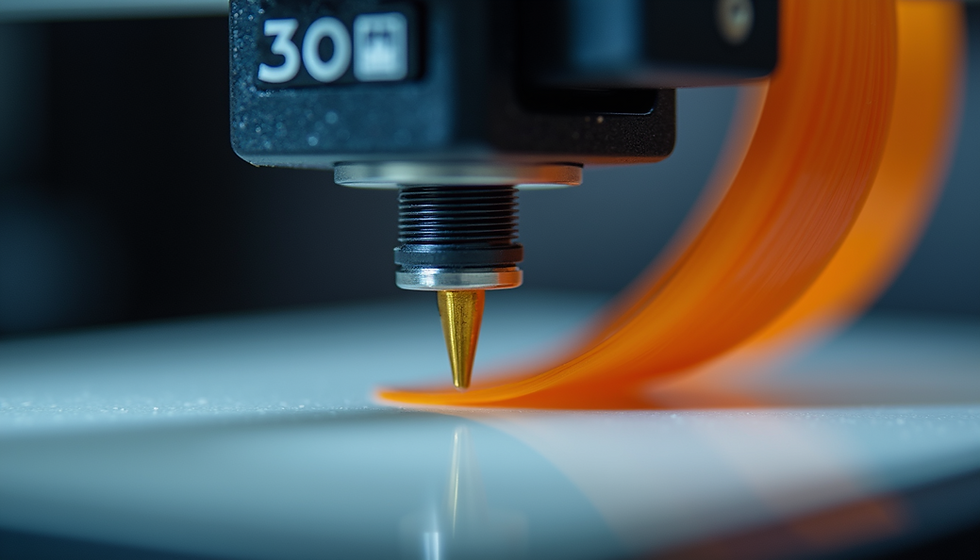Benefits of Rapid Prototyping with 3D Printing
- Bryan McFarland
- Oct 29
- 4 min read
When I first encountered rapid prototyping, I was amazed at how quickly ideas could transform into tangible models. This technology has revolutionized manufacturing, making the process faster, more efficient, and incredibly flexible. Whether you're an engineer, designer, or hobbyist, understanding the advantages of rapid prototyping can unlock new possibilities for your projects.
Rapid prototyping is not just about speed; it’s about precision, creativity, and cost-effectiveness. It allows you to test, refine, and perfect your designs before committing to full-scale production. Let’s dive into why this approach is a game-changer in manufacturing.
Advantages of Rapid Prototyping: Speed and Efficiency
One of the most obvious benefits of rapid prototyping is the speed at which you can move from concept to physical model. Traditional manufacturing methods often require weeks or months to create a prototype. With rapid prototyping, this timeline shrinks dramatically.
Imagine designing a new product and having a physical model in your hands within days. This quick turnaround accelerates decision-making and reduces the time to market. It also allows for multiple iterations without the usual delays, so you can refine your design until it’s just right.
Faster feedback loops: You can test and evaluate your design quickly.
Reduced development time: Projects move from idea to prototype in a fraction of the time.
Increased productivity: Teams can work more efficiently with tangible models.
This speed doesn’t sacrifice quality. Modern rapid prototyping technologies, like 3D printing, produce highly detailed and accurate models that closely mimic the final product.

What are five advantages of a prototype?
Prototypes are essential tools in the manufacturing process. Here are five key advantages they offer:
Improved Design Accuracy
Prototypes help identify design flaws early. By seeing and handling a physical model, you can spot issues that might be missed in digital designs.
Enhanced Communication
A prototype serves as a clear communication tool between designers, engineers, and stakeholders. It bridges the gap between abstract ideas and concrete understanding.
Cost Savings
Catching errors early reduces costly mistakes during mass production. Prototyping helps avoid expensive rework and material waste.
User Testing and Feedback
Prototypes allow for real-world testing and user feedback. This input is invaluable for refining usability and functionality.
Marketing and Presentation
A prototype can be used to showcase your product to investors, clients, or customers, making your pitch more compelling and tangible.
These advantages highlight why prototyping is a critical step in product development. It’s not just about making a model; it’s about making a better product.
Cost-Effectiveness and Resource Optimization
Many people assume rapid prototyping is expensive, but in reality, it often saves money. Traditional prototyping methods can be costly due to tooling, molds, and manual labor. Rapid prototyping uses digital files and additive manufacturing, which reduces material waste and labor costs.
Here’s how rapid prototyping helps optimize resources:
Minimal material waste: Additive processes build parts layer by layer, using only the material needed.
Lower labor costs: Automation reduces the need for manual intervention.
No expensive tooling: You don’t need to invest in molds or dies for each iteration.
Faster iterations: Quickly test multiple designs without significant cost increases.
By cutting down on wasted materials and time, rapid prototyping makes product development more sustainable and budget-friendly.

Flexibility and Customization in Design
One of the most exciting aspects of rapid prototyping is the freedom it gives you to experiment. Unlike traditional manufacturing, which often requires fixed tooling and processes, rapid prototyping adapts easily to design changes.
This flexibility means you can:
Test multiple design variations without extra cost.
Customize products for specific needs or clients.
Incorporate complex geometries that are difficult or impossible with traditional methods.
Respond quickly to market feedback by updating designs on the fly.
For businesses and creators, this means staying agile and competitive. You can innovate faster and tailor products to meet exact specifications.
How Rapid Prototyping Benefits Product Development
The rapid prototyping benefits extend beyond just making models quickly. It transforms the entire product development cycle by:
Reducing risk: Early prototypes reveal potential problems before mass production.
Improving collaboration: Teams can work together more effectively with physical models.
Enhancing innovation: Rapid iteration encourages creative problem-solving.
Speeding up market entry: Faster development means you can launch products sooner.
By integrating rapid prototyping into your workflow, you gain a powerful tool that supports smarter, faster, and more cost-effective manufacturing.
Embracing the Future with 3D Printing
As technology advances, rapid prototyping continues to evolve. New materials, faster printers, and improved software are making it even more accessible and versatile. For anyone involved in product creation, embracing these tools is essential.
Whether you’re developing a new gadget, creating custom parts, or simply exploring ideas, rapid prototyping offers a dynamic way to bring your vision to life. It’s a blend of art and science that empowers you to innovate with confidence.
If you want to stay ahead, consider how rapid prototyping can fit into your process. The benefits are clear, and the possibilities are endless.
If you're a hobbyist, inventor or just have an idea you'd like to see fabricated, rapid prototyping will allow you to have your product in-hand at a reasonable price.
Ready to take your projects to the next level? Explore how rapid prototyping can transform your journey and help you create better products faster.

Comments